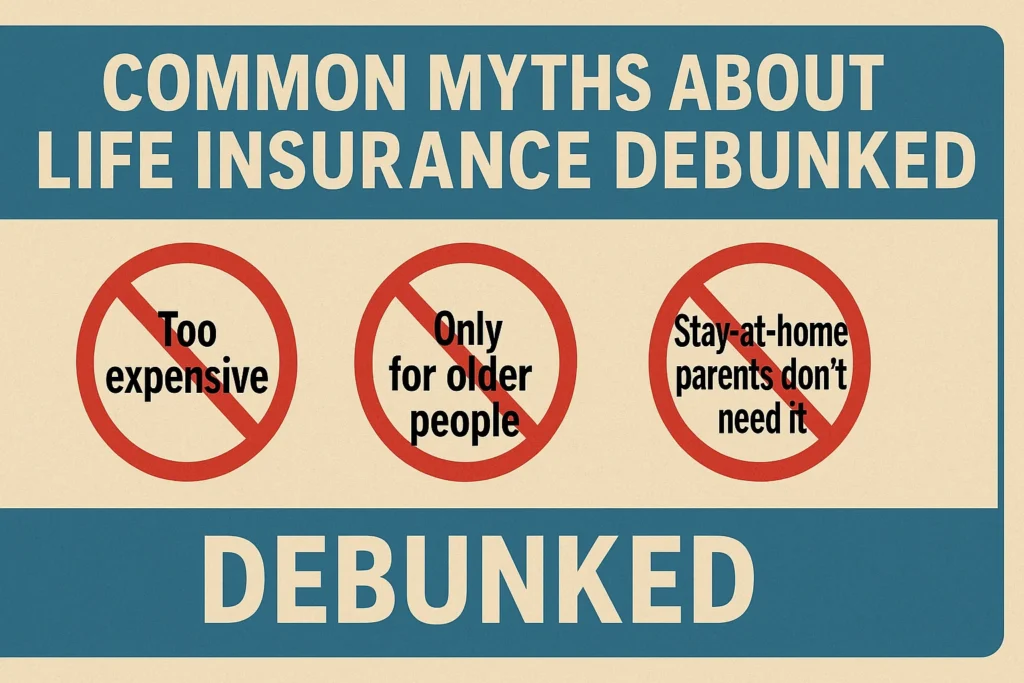Introduction:
How does life insurance work? It is a question many of us ponder when thinking about securing our family’s future. In this article, we are going to break it all down for you—step by step, in a way that feels like a friendly chat. We will explore what life insurance is, the different types available, how premiums are calculated, and what happens when it is time to make a claim.
Whether you are new to the concept or just brushing up, our goal is to make it clear and simple. Expect practical insights into policies, beneficiaries, and payouts, all while keeping things relatable. By the end, you will have a solid grasp of how this financial tool can bring peace of mind. For more on the basics, check out Investopedia’s guide to get a broader view.
Table of Contents
What Is Life Insurance and Why Does It Matter?
Let us start with the foundation: life insurance is a contract between you and an insurance company. You pay regular premiums, and in return, they promise to pay a sum—called a death benefit—to your chosen beneficiaries if you pass away during the policy term. It is like a safety net, ensuring your loved ones are not left struggling financially.
Why does this matter? Think about your family—your spouse, kids, or even aging parents. Life insurance helps cover expenses like mortgages, daily bills, or education costs after you are gone. How does life insurance work in real life? It replaces your income, giving those you care about a buffer to keep going. It is not just about money; it is about stability and care when it counts most.
For a deeper look at how it supports families, see this guide on term life insurance.
Types of Life Insurance: Which One Fits You?
When it comes to life insurance, there is no one-size-fits-all. The two main types are term life and permanent life, and understanding how does life insurance work depends on knowing their differences.
Term life insurance is straightforward. It covers you for a set period—say, 10, 20, or 30 years. If you pass away during that time, your beneficiaries get the payout. If not, the policy expires, and that is it. It is affordable and great for temporary needs, like raising kids or paying off a mortgage.
Permanent life insurance, on the other hand, lasts your entire life as long as premiums are paid. It includes options like whole life or universal life, which also build cash value over time—a sort of savings component you can borrow against. It costs more but offers lifelong coverage.
Not sure which is better? Compare them both here in this article to see what aligns with your goals.

How Are Premiums Determined?
Now, let us talk about premiums—the amount you pay monthly or yearly. How does life insurance work when it comes to costing you? Insurers look at several factors to set your rate.
First, there is your age. Younger folks usually pay less because they are less likely to pass away soon. Health is huge too—conditions like diabetes or smoking can bump up your premium. They will often ask for a medical exam or health history to assess this.
Your lifestyle plays a role as well. If you skydive or have a risky job, expect higher costs. The policy type and coverage amount also matter—more coverage or a permanent plan means higher premiums. How does life insurance work with all these variables? Insurers use them to calculate risk and set a fair price.
Curious about other insurance costs of a Car? Check out ways to lower car insurance for similar insights.
Choosing Beneficiaries: Who Gets the Payout?
A big part of how does life insurance work is deciding who benefits from it. Your beneficiaries are the people—or even entities like a charity—you name to receive the death benefit. It could be your spouse, kids, or anyone you want to support.
You can pick primary beneficiaries (first in line) and contingent ones (backups if the primaries cannot claim it). Be specific when naming them—full names and relationships help avoid confusion later. You can change them anytime, too, as life evolves—marriage, divorce, or new kids might shift your plans.
Here is a tip: keep your policy updated. If a beneficiary passes away before you, the payout could get messy. How does life insurance work smoothly? Clear choices and regular reviews make all the difference.
Learn more about how life insurance secures your future life.
The Claims Process: What Happens When the Time Comes?
So, what happens when a loved one needs to claim the insurance? Understanding how does life insurance work during this stage is key. When you pass away, your beneficiaries contact the insurance company with your policy number and a death certificate.
The insurer reviews the claim to ensure everything checks out—like confirming the policy was active and premiums were paid. If there are no red flags (like fraud), they process the payout. This can take a few weeks to a couple of months, depending on the case.
Beneficiaries might get a lump sum or installments, based on what you set up. How does life insurance work to ease their burden? It is designed to be straightforward, but having your paperwork organized helps speed things up.
For more on claims trends, explore AI in insurance claims to grasp an updated info.

Cash Value and Living Benefits: Extra Perks Explained
With permanent life insurance, there is more to the story. How does life insurance work beyond just a death benefit? Enter cash value—a feature of whole or universal life policies. Part of your premium builds this savings-like component over time, growing with interest or investments.
You can tap into it while alive—borrow against it, withdraw it, or even use it to pay premiums if money gets tight. Some policies also offer living benefits, like payouts for terminal illness or long-term care. It is a way to make life insurance work for you now, not just later.
Keep in mind, though, borrowing reduces the death benefit unless repaid. Want lifelong security? See this whole life guide.
Common Myths About Life Insurance Debunked:
Let us clear up some confusion. How does life insurance work when myths cloud the picture? One big one: “It is too expensive.” Truth is, term life can be pretty affordable, especially if you are young and healthy.
Another myth: “Only breadwinners need it.” Not so—stay-at-home parents provide value worth covering too, like childcare costs. Some think, “My job’s coverage is enough.” Employer plans often fall short for long-term needs.
Then there is “I am too old to get it.” Nope—options exist even for seniors also. How does life insurance work past these myths? It adapts to your life, no matter the stage. For more clarity, visit this senior insurance guide. Plus, get the facts from Wikipedia’s overview.

Conclusion:
We have walked through the ins and outs of how does life insurance work—from what it is and why it matters to types, premiums, beneficiaries, claims, and even extra perks like cash value. It is all about giving you control to protect what is dear, whether that is your family’s home or their future dreams. Life insurance is not just a policy; it is a promise to keep things steady when life shifts. Ready to take the next step? Chat with an insurance pro or dig into options that fit your world. For more on planning ahead, explore retirement tips to pair with your coverage goals.
Disclaimer:
This article is meant to inform and guide you on how life insurance works, based on general principles and insights. It is not financial advice tailored to your unique situation. Insurance rules, costs, and options can vary by country, provider, and personal factors like health or age. We have done our best to keep the info accurate and current, pulling from trusted sources. However, always consult a licensed insurance advisor or financial expert before making decisions. Policies change, and so might your needs—so double-check details with your insurer to ensure you are covered right.
Data Sources:
To craft this article, we leaned on reputable, high-authority sites with strong domain and page authority. We pulled foundational knowledge from Investopedia for clear definitions and mechanics. Wikipedia offered a broad, global take on life insurance history and types. For practical insights, we tapped NerdWallet, a trusted U.S.-based resource for consumer insurance info. These sources, alongside industry blogs like insureyourfuturelife.com, helped us shape a well-rounded, up-to-date guide.
I create clear, insightful content on finance, insurance, and investing. I use original visuals made with AI tools like ChatGPT, Copilot, Groke3, Gemini, and Canva to ensure quality and authenticity. Before publishing, each article is carefully edited by a dedicated editor. Connect with me on LinkedIn for more updates and insights.
